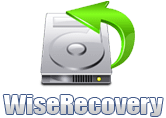Basic storage involves dividing a disk into primary and extended partitions. This is the route that all versions of Windows that were reliant on DOS-handled storage took, and disks formatted in this manner are known as basic disks. Volumes can use any supported file system. The feature makes the storage device more efficiency, but although makes them difficult for conventional disk image software to handle.
Generally speaking, dynamic disks can contain an unlimited volume of data, but they cannot contain partitions or logical drives. Dynamic disks offer more management flexibility without the partition limitation of conventional storage. Volumes in dynamic disks can span several physical disks, or be striped across multiple disks for better performance. Volumes in dynamic disks can also be mirrored or set up as a RAID 5 array. Dynamic volumes can even be confined to a single disk. Since you can perform disk and volume operations on dynamic disks without restarting Windows, dynamic storage gives storage users multiple options to deal with the rising volume of data.
While dynamic disks offer new powerful tools, there are also some serious limitations that aren’t present with conventional drives. Many of these limits are related to restoration. Dynamic storage can scatter pieces of data across several drives, which means that many conventional disk imaging tools that read blocks off the disk won’t capture a usable image.
WiseRecovery is a full featured data recovery software which can restore almost all kinds of data loss. With it your files, photos or important documents are safe even if there is something wrong with your computer. WiseRecovery can restore data loss in many situations and the followings are included.
How to do dynamic disk recovery with WiseRecovery
1. Run WiseRecovery software, and click on Start scan.
2. Choose the drive to start scanning.
3. Now, the scanning process will commence. After scanning, list of file types will be displayed in the left pane.
4. Click each file type to view files in it. You will see thumbnails when you click on the file type.
5. You can either recover all or selected files by clicking the Recovery button.


 English
English Français
Français Español
Español Deutsch
Deutsch Italiano
Italiano 日本語
日本語 简体中文
简体中文 繁體中文
繁體中文